-
 play_arrow
play_arrow
Clubalicious Clubalicious Radio
-
 play_arrow
play_arrow
London Calling Podcast Yana Bolder

College Station TX (November 11, 2024)—George Strait never does anything small, but the country star’s concert this past summer at Texas A&M’s Kyle Field was massive even by his standards. The in-the-round show drew 110,905 fans, setting a record for the most-attended ticketed, non-festival concert in U.S. history.
“I heard rumbles for a couple of years that they wanted to do something at Kyle Field,” recalled Strait’s longtime FOH engineer, George Olson. “Around November last year, we heard it was going to happen. I don’t know if they were shooting for the record or not, but it didn’t take us very long to pull up the specs on the building and go, ‘That’s a really large room!’”
Covering that many fans presented a variety of production challenges that had to be addressed. The decision was made early on to present the show in-the-round with the stage placed at the 50-yard line— a move that was a change of pace for Strait, as he’s played arenas in-the-round for decades, but typically uses a stage in the end zone for stadium shows.
“We’ve done so many in-the-round shows that I’m actually more comfortable with that than I am on an end-zone stage, mainly because people are half the distance to the P.A.,” said Olson. “You don’t have to drive the rig as hard to reach people in the upper seats and it still translates well. We walked the room listening to the P.A. the day before, and even at the very top of the place, we were 400 feet away but it didn’t feel like it. It felt like a really large arena—you were there, not in another ZIP code.”

Helping fans feel closer, too, was the lack of delay towers blocking their view. Instead, the P.A., video screens and lights were all hung from the roof of a 70-by-70-foot G2 Structures stage.
“It was literally eight hangs of P.A. to cover the entire stadium,” said Olson. Provided by Spectrum Sound (Nashville, Tenn.), the various d&b audiotechnik hangs were as big as the show itself. While there was a surfeit of SL-Subs on hand—a half-dozen flown in each corner, bolstered by 32 on the floor—facing the end zones were pairs of long-throw GSL hangs, each one comprised of 20 GSL8s and four GSL12s. Similarly, for the short-throws facing the stadium’s sides, each hang was made up of 24 KSLs. “We needed the vertical coverage,” said Olson. “Each box is 10 degrees within itself and that was the only way we could get from top to bottom.”
The setup was based around a P.A. arrangement that’s worked on Strait’s arena shows for years, covering the crowd while lessening its impact on the stage. “When you’re in-the-round in the arenas, you start cramming eight hangs at 18 boxes deep in a 40-foot circumference—and that’s a lot of low frequency drivers hanging out in one area, so the summation off the back of the speakers becomes a tricky thing to deal with,” said Olson. “With the KSLs and GSLs, that side-firing rejection becomes a great benefit, and helps keep things on stage from getting excited with all that extra low-end energy that comes off the back of the boxes.”

Changing things up for Strait and his 11-member band, the stage itself rotated. When they play arenas in-the-round, the band faces one direction while Strait walks from corner to corner between songs. For the Kyle Field show, the band had to fit into a rotating disc 56 feet in diameter—as opposed to the usual 80 feet it takes up on an endzone stage. The stage itself took roughly eight minutes to do a complete 360, making two full spins before stopping and going the other direction.
“With the rotating stage, you start to hear things from microphones as they move around with the stage, getting closer to one hang than the other and or closer to a front fill,” said Olson. “That changing proximity to speakers can become a little bit of a challenge, but you figure it out; we didn’t have any issues.”
While the concert may have been one for the record books, Olson approached mixing it the same as any other George Strait show. “I try to keep it as true to the album mix as I can,” he said. “I like to take the crowd on that catalog journey of ‘This is what this song was mixed like on the album back in 1980, and this is what the new song sounds like.’ Our audience is usually four generations—the demographic is 18 to 80. It’s nothing for me to see grandma, mom, daughter and great-granddaughter all sitting in a row, so you need to appeal to everybody there; you can’t run it like a full-on Metallica show, because you’re going to upset three quarters of your audience.”
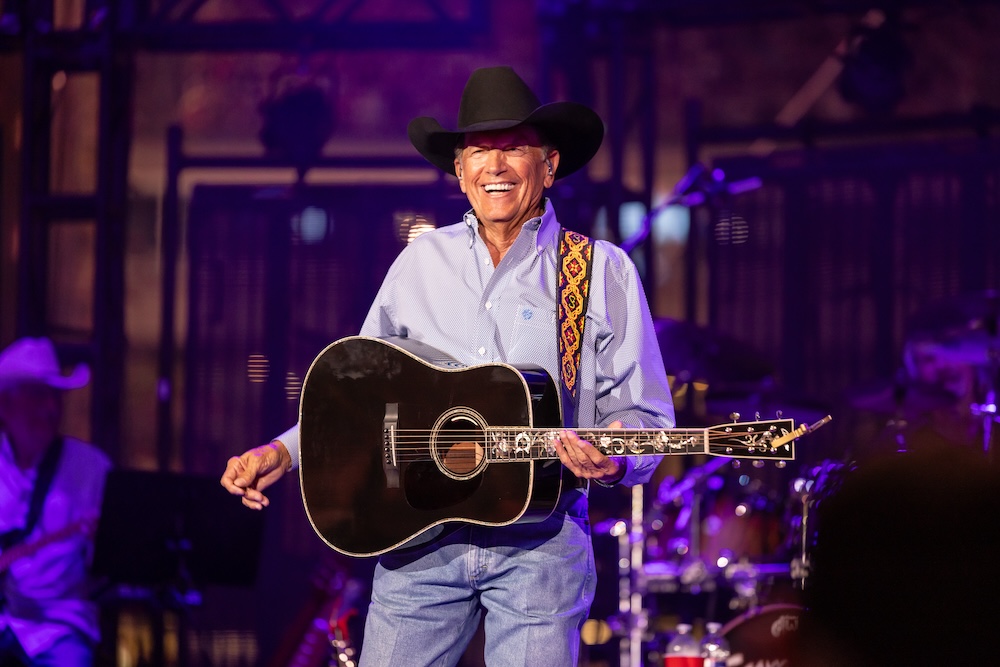
That house mix gets created on a DiGiCo SD12 console, joined by a Waves rig used primarily for reverb and delay plug-ins; channel processing and everything else is handled within the console itself. “For outboard gear, I’ve got an old Waves MaxxBCL that I use as a tap compress and limit,” said Olson. “It’s more of a visual to me, where I can just look over and make sure I’m not doing anything I’ll live to regret later. Also, I’ve got a couple of Lake LM44s that I use for my own I/O into the main P.A.”
Keeping tabs on the dozen musicians onstage was monitor engineer Michael Bangs. A veteran monitor pro, Bangs took over the role in 2017, adding it to his full-time position at Allen & Heath in the U.S. “I run the touring division, and I’m part of the development team for dLive,” he said, “but I still get to run around with George and have fun. Every show we do with George is big numbers, but I didn’t know it was a record until George said it on stage. I had no idea; it was just another day at the office for us.”
While Bangs tackles mixes on an Allen & Heath S5000 surface, the pick is by choice. “There’s so many things it allows me to do that no other platform can,” he explained, adding quickly, “Yes, I do work for the company, but it’s worth noting that I chose the platform and was passionate about it before it was my job, and it’s why I allowed it to become my job. When they said, ‘Hey, can we pay you to tell people about this desk,’ I thought that would be stupid to turn down since I genuinely do love it.”

Accordingly, he uses the S5000 to build 14 in-ear monitor mixes heard via 64 Audio A12T earpieces on Shure PSM 1000 wireless, along with five mixes that go to d&b M2 wedges powered by D80 amplifiers, plus a d&b single-15 drum sub. Roughly half the band uses Allen & Heath IP8 remote controllers—a network-based remote that the musicians use to adjust their mix in the monitor console.
Also expanding the in-ear mixes is a judicious use of ambiance. “Depending on the show, I’ve got between four and eight channels of ambiance mics because no one likes to be trapped in a cage of their own thoughts in their in-ears,” he mused. “I’m not the guy that puts shotgun mics out to pick up the audience; I never understood that, because the crowd is in every microphone on the stage. I’m trying to get just the vibe in the environment of what’s happening in the stage, so that they all feel engaged and connected to one another.”
Kenny Chesney—Taking Here and Now to Another Level
Miking is largely a mix of tried-and-true choices from a handful of brands. Strait’s vocal is heard via an Earthworks SR40V hypercardioid handheld, and the drums are likewise captured with an Earthworks DK7 drum kit system. While the background vocals are heard through Shure Beta 58s, a broad selection of Royer ribbon microphones dot the stage for guitar cabinets and drum overheads, and all DI inputs are handled with Rupert Neve Designs RNDIs.
While the Kyle Field record will surely stand for a while—the Grateful Dead previously held it for 46 years—it’s just the latest in a long list of notable George Strait concerts. “I’ve always heard that we’ve opened more arenas than any other artist out there,” said Olson, “and I remember when we opened up AT&T Stadium for the Dallas Cowboys back in ’09; we were literally loading-in with hard hats and construction vests. But almost 111,000 people at Kyle Field? That’s a big one. It was once in a lifetime show, that’s for sure—at least for now.”
Written by: Admin
Similar posts
Recent Comments
No comments to show.Featured post

Latest posts
Current show
Upcoming shows
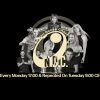
Norwegian Dance Chart
Top 40 Hottest Tracks in Norway
09:00 - 11:00
Fresh Is Fresh
This Weeks Hottest Releases
11:00 - 16:00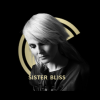
In Session
Sister Bliss
16:00 - 17:00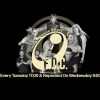
Finnish Dance Chart
Top 40 Hottest Dance Tracks In Finland
17:00 - 19:00
Made To Move
Jacob Colon
19:00 - 20:00Chart
Powered by Dee jay promotions visit us





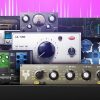







 Invalid license, for more info click here
Invalid license, for more info click here